Local History Booklets
The Heritage Centre is grateful to Ralph Cousins for his permission to include the Local History Booklets on this website. All the copyright for these booklets remains with the authors.
These booklets are a valuable resource for local historians to understand and research this area further. They represent hours of work to collate and write these booklets for the local community. They may be available for purchase from The Spring Museum in Havant who have agreed their use by the Heritage Centre. Copies are also available directly from their publisher, Ralph Cousins, who can be contacted by email via the editor.
About Rowlands Castle
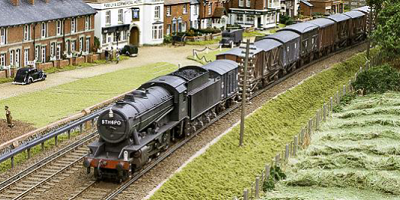
Rowlands Castle D Day. The Rowlands Castle Heritage Centre is now the proud owner of the award winning model railway designed and built by Peter Goss. The model depicts The Green and Railway Station and yard at Rowland’s Castle, in 1944 during the preparations for the Normandy D-Day Landings. Reproduced here with permission of Ralph Cousins.
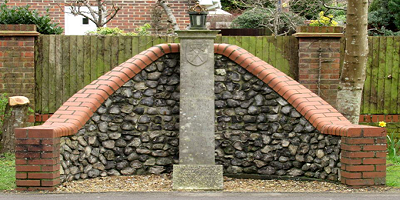
Rowlands Castle in World War 2. The King’s Stone, Horndean Road, Rowlands Castle, is inscribed: Here on 22 May 1944 His Majesty King George VI reviewed and bade God speed to his troops about to embark for the invasion and liberation of Europe. Deo Gratia. Reproduced here with permission of Ralph Cousins.
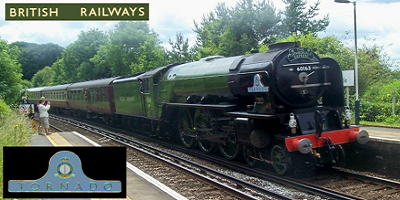
The Railway at Rowlands Castle. No. 60163 Tornado is a brand new engine completed in 2008. It is based on a London North Eastern Railway Peppercorn Class A1 design. It is seen here passing through Rowlands Castle starting the climb to Buriton tunnel. Reproduced here with permission of Ralph Cousins.
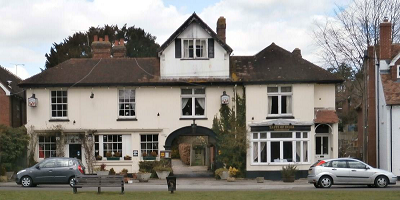
The Inns of Rowlands Castle. Find out more about the history of our local pubs and hotels, the Staunton Arms (now a Harvester), The Robin Hood (formerly the Railway), The Castle Inn and The Fountain, along with the George in Finchdean.
Extracts from The Inns and Public Houses of Rowlands Castle, Durrants, Redhill, Finchdean, Forestside and Stansted, written by Steve Jones and photos from Alf Harris with kind permission from Ralph Cousins.
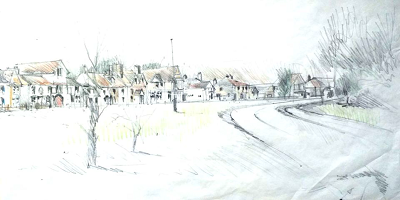
The Royal Forest of Bere. An interesting look at the history of Rowlands Castle though its landscape can be read in “The Royal Forest of Bere, Bedhampton Deer Park, Havant Thicket (Havant Chase), Rowlands Castle Deer Park by John Pile, and reproduced here with permission of Ralph Cousins.
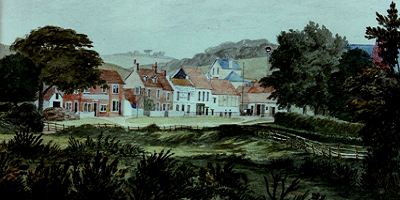
Rowlands Castle Paintings by Charles Rogers Cotton. Charles Rogers Cotton was born 2 June 1797 in the City of London, the son of William Cotton FSA (1759-1816) and Catherine Mary Cotton, née Savery (1769-1803). CR Cotton’s great grandfather (1711-1784) was an English customs officer and art collector. He was elected Fellow of the Society of Antiquaries London in 1752 and Fellow of the Royal Society in 1757. The art collection descended to CR Cotton’s father who sold it at auction in 1799 and 1801, realizing £3,886 10s. Reproduced here with permission of Ralph Cousins.
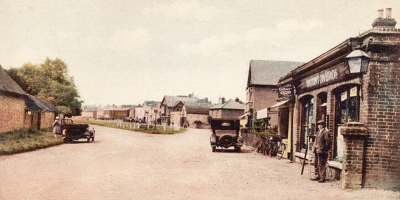
Rowlands Castle Miscellany. This is a collection of pictures, articles and notes relating to the history of Rowlands Castle. Reproduced here with permission of Ralph Cousins.
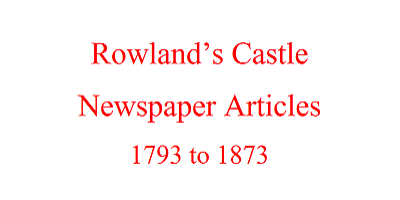
Rowlands Castle News 1793 to 1873. Take a look at this collection of newspaper articles featuring Rowlands Castle from 1793 to 1873, which give a fascinating insight into the social history and development of the area. Reproduced with kind permission of Ralph Cousins and Steve Jones.
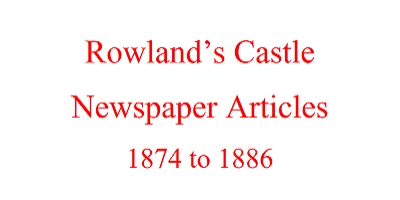
Rowlands Castle News 1874 to 1886. Take a look at this collection of newspaper articles featuring Rowlands Castle from 1874 to 1886, which give a fascinating insight into the social history and development of the area. Reproduced with kind permission of Ralph Cousins and Steve Jones.
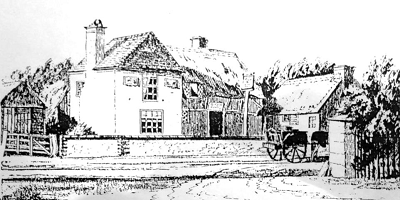
Rowlands Castle and the Smugglers. The White Hart Inn was demolished to make way for the railway in the 1850s. The Castle Inn was built to replace it. The infamous story of the smugglers’ meeting in the White Hart is told here in this booklet, compiled by Ralph Cousins.
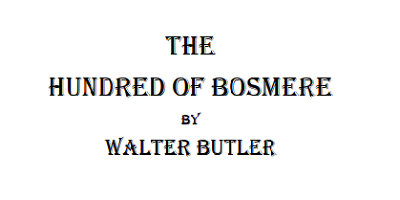
The Hundred of Bosmere. Written in 1817, “The Hundred of Bosmere” is a booklet written about the area by Rev Bingley and Walter Butler. It gives an interesting insight into Rowlands Castle at this time, when it was only a small part of Warblington Parish. Reproduced here with thanks to Ralph Cousins, who compiled the booklet.
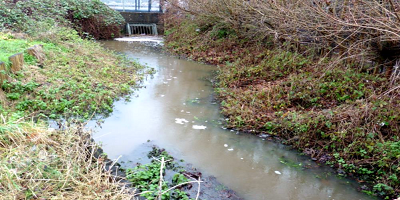
The Lavant Stream at Havant and Rowlands-Castle. The Lavant is a chalk stream that typically only flows during winter when groundwater levels are high. Over the years there have been many recorded flooding events, detailed here by Robert West, Paul Marshman and Andy Lee. The Lavant Stream at Havant, Rowlands Castle and Finchdean is reproduced here with permission of Ralph Cousins.
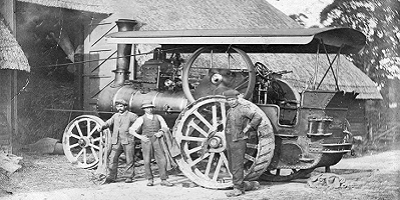
Henry Francis of Rowlands Castle. This is a photo of a Wallis & Steevens 6nhp single cylinder traction engine, makers No. 2144, new 6 July 1889 to Richard Boys of Horndean. By June 1910 it was owned by Henry. It was returned to Wallis & Steevens in part exchange for No.7153.
Henry Francis, on the right, and crew are threshing. According to his grandson, Walter, Francis Henry always stuffed his cap with newspaper. Reproduced here with permission of Ralph Cousins.
About nearby Havant
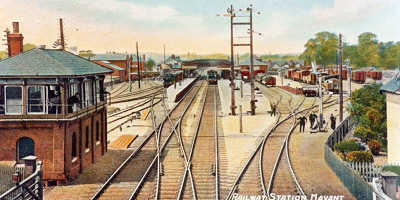
Railway in Havant and surrounding stations. By virtue of its position at the eastern end of the narrow coastal plain giving access to Portsmouth, Havant has always been intimately connected with any scheme of canal or railway transport between London and Portsmouth. Reproduced here with permission of Ralph Cousins.
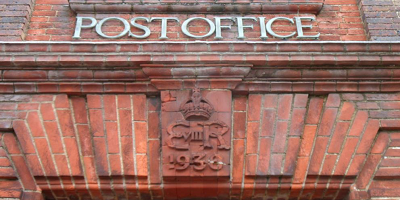
A History of the Post Office in the Havant Area. This booklet was written by Robert Walker, Mike Hill, Lesley Marley, Chris Dudeney and Dr Margaret Rogers. It is available to be read here with kind permission of Ralph Cousins. P93 onwards has a reference to Rowlands Castle.
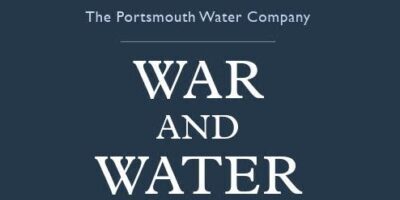
War and Water. This publication details events involving Portsmouth Water in the years leading up to and during the Second World War including the preparations for “D-Day” and how we planned to ensure that water supply would be plentiful for the massing troops getting ready to invade France.